Moon Monday #75: One orbiter to rule them all, a pathfinder and a communications relay network
I’m delighted to welcome Open Lunar Foundation as a sponsor of Moon Monday! I love their work on space policy to help ensure that our return to the Moon with humans is sustainable and cooperative. Jessy gave me feedback on the very first Moon Monday issue, and Open Lunar has been supportive ever since, so I’m really happy to have their extended support. :)
NASA’s underrated Moon orbiter gets critical extension
Following an extensive review process, NASA has extended the 2009-launched Lunar Reconnaissance Orbiter (LRO) mission for the fifth time. During this three-year phase called ESM5 that starts from September 2022, LRO will continue to study the Moon’s surface and geology with a particular focus near the poles, and keep aiding planning of upcoming robotic and Artemis crewed landings by providing high-resolution imagery and related topographic data as well as enhancing tooling around data access.
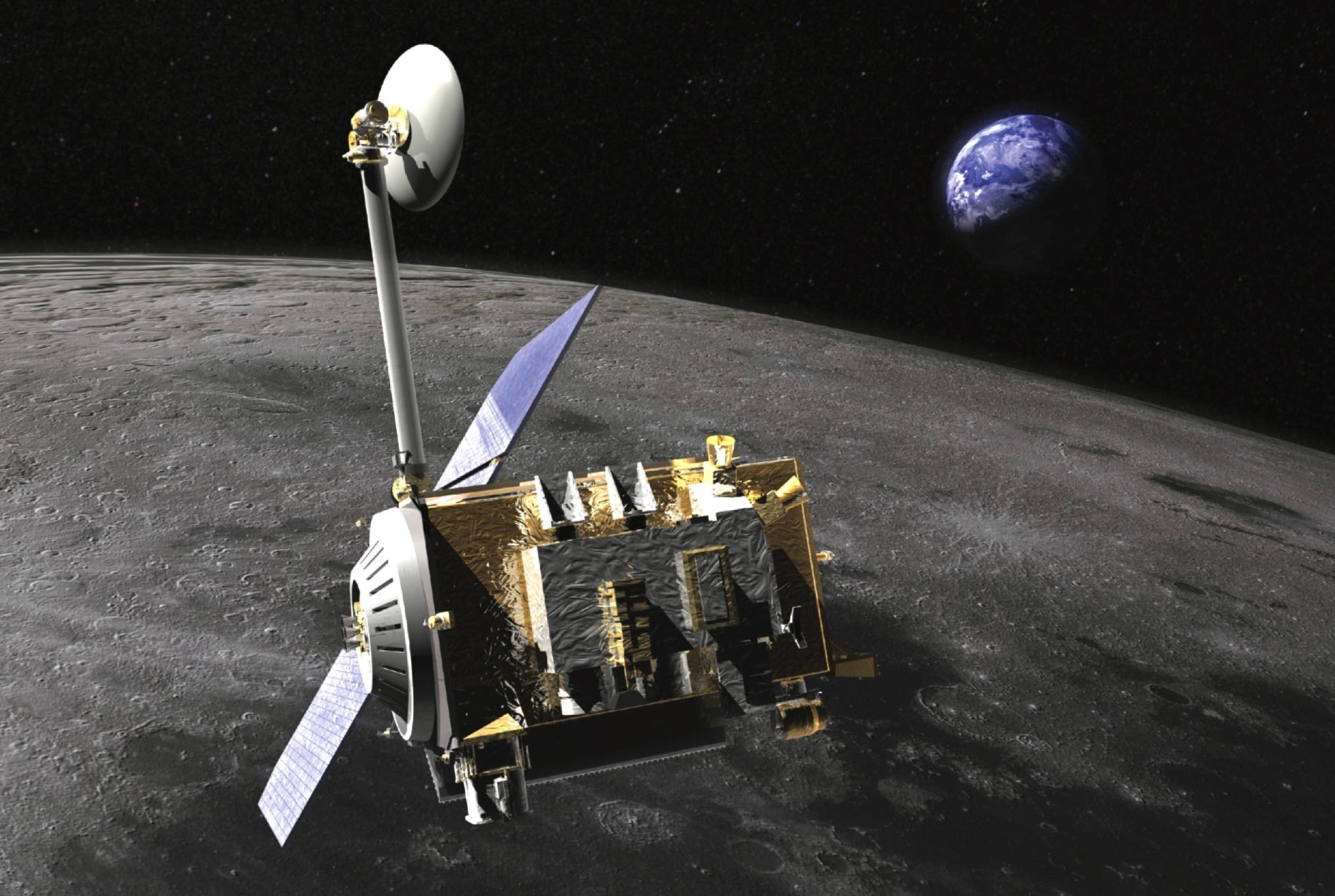
Here are some of my key takeaways for ESM5 from the Final Report containing the mission review.
- During ESM5, the LRO team will not only coordinate more closely with NASA’s two human exploration directorates for crewed Artemis missions but also enhance support for commercial Moon landing missions selected by NASA under its CLPS program by providing landing site selection analyses.
- LRO will make targeted observations of the permanently shadowed Cabeus crater on the Moon’s south pole, where NASA’s LCROSS spacecraft impacted in 2009 and whose follow-up observations found 155 kilograms of water. LRO’s new remote measurements of water ice in the crater will tell us how its distribution changes over time and seasons. Combined with improved imaging of the poles, ESM5 will tell us about the conditions under which lunar water ice remains stable and preserved in such regions. These factors are also relevant in planning extraction of resources to sustain future habitats on the Moon.
- All that being said, the report points out that NASA needs to plan a replacement of the aging LRO by 2026 to support the increasingly important NASA(-funded) Moon missions to come.
It’s worth remarking that while NASA has a fleet of orbiters to support and enable surface science on Mars, LRO is single-handedly handling the equivalent part for all of Artemis. Even outside the U.S., LRO’s modern, comprehensive dataset—which at over 1.3 petabytes is the largest from any NASA planetary science mission—has been and continues to be critical for planning recent and upcoming Moon landing attempts such as India’s Chandrayaan 2 and ispace Japan’s M1 and M2 landers. And yet there isn’t currently a planned NASA mission that can take over the baton from LRO.
That makes me wonder if it might be a great idea for NASA and ISRO to collaborate on observations by LRO and the Chandrayaan 2 orbiter. Not only are both of them reconnaissance missions with similarly broad instrument sets, the Chandrayaan 2 orbiter having launched a decade later is more capable in certain areas, such as having a best imaging resolution of 0.25 meters/pixel, twice LRO’s best. The Chandrayaan 2 orbiter has enough fuel until at least 2027. If NASA and ISRO can collaborate again, like the excellent Chandrayaan 1 example, to let the Chandrayaan 2 orbiter contribute observations and datasets for Artemis planning, such a move can also positively affect India’s undecided stance on the Artemis Accords.
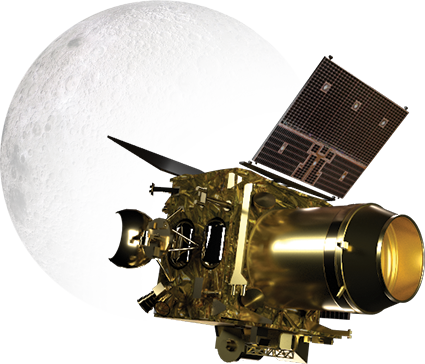
Related: The amazing LROC Quickmap web app lets you explore LRO’s imagery and data on an interactive Moon map, complete with the ability to add instrument data layers from several other missions, and so much more! I’ve wasted spent more time exploring our Moon on Quickmap than I’d care to admit to my past employer.
China to build a lunar communications and navigation constellation too
Following ESA’s recently formally approved Moonlight plan to build a lunar satellite network to provide communications and navigation services to landed and orbital lunar missions, and NASA’s similar LunaNet concept, China has announced intentions to build their own such constellation to support their future missions and the upcoming joint Sino-Russian long-term scientific base on the Moon’s south pole.
The constellation’s first part will be a relay satellite launching in 2023 or 2024 to support the Chang’e 6 and 7 missions, both of which will launch by 2025. While China already has a relay satellite to communicate with Chang’e 4, it is aging and its halo orbit around Earth-Moon Lagrange point 2 isn’t ideal for the Chang’e 7 south polar mission or the Chang’e 6 sample return one from the south pole or the near-polar farside. In the meanwhile, China is considering using its Chang’e 5 service module, currently in a Distant Retrograde Orbit around the Moon, to test different orbits as an input to designing the future constellation.
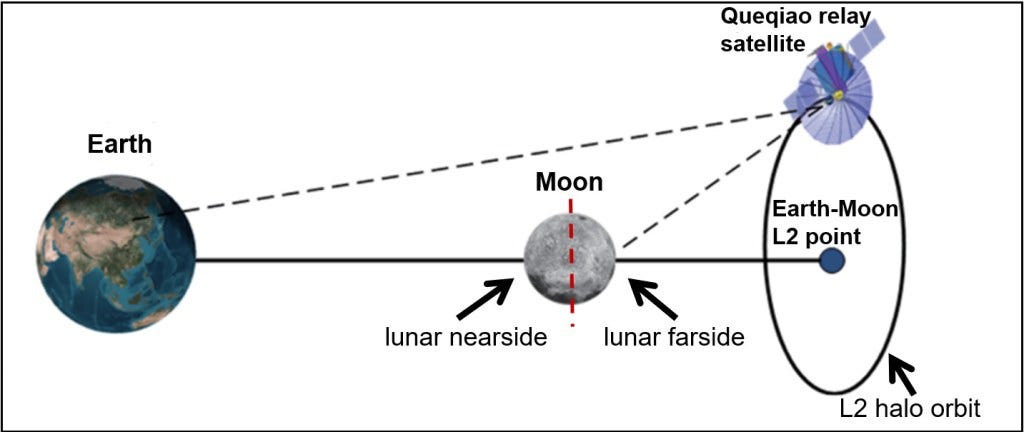
Pathfinding for Moonlight
Last month ESA delivered the NaviMoon receiver test hardware to SSTL, whose flight model will be on the latter’s Lunar Pathfinder orbiter launching in 2025 to demonstrate a GPS fix at the Moon using signals millions of times fainter than those used by our phones. While Lunar Pathfinder will use its own hardware to relay communications between Earth and robotic lunar missions, the spacecraft will regularly orient towards Earth to test the NaviMoon receiver. Positioning fixes from the receiver will be compared with conventional radio ranging methods to know how well it works.
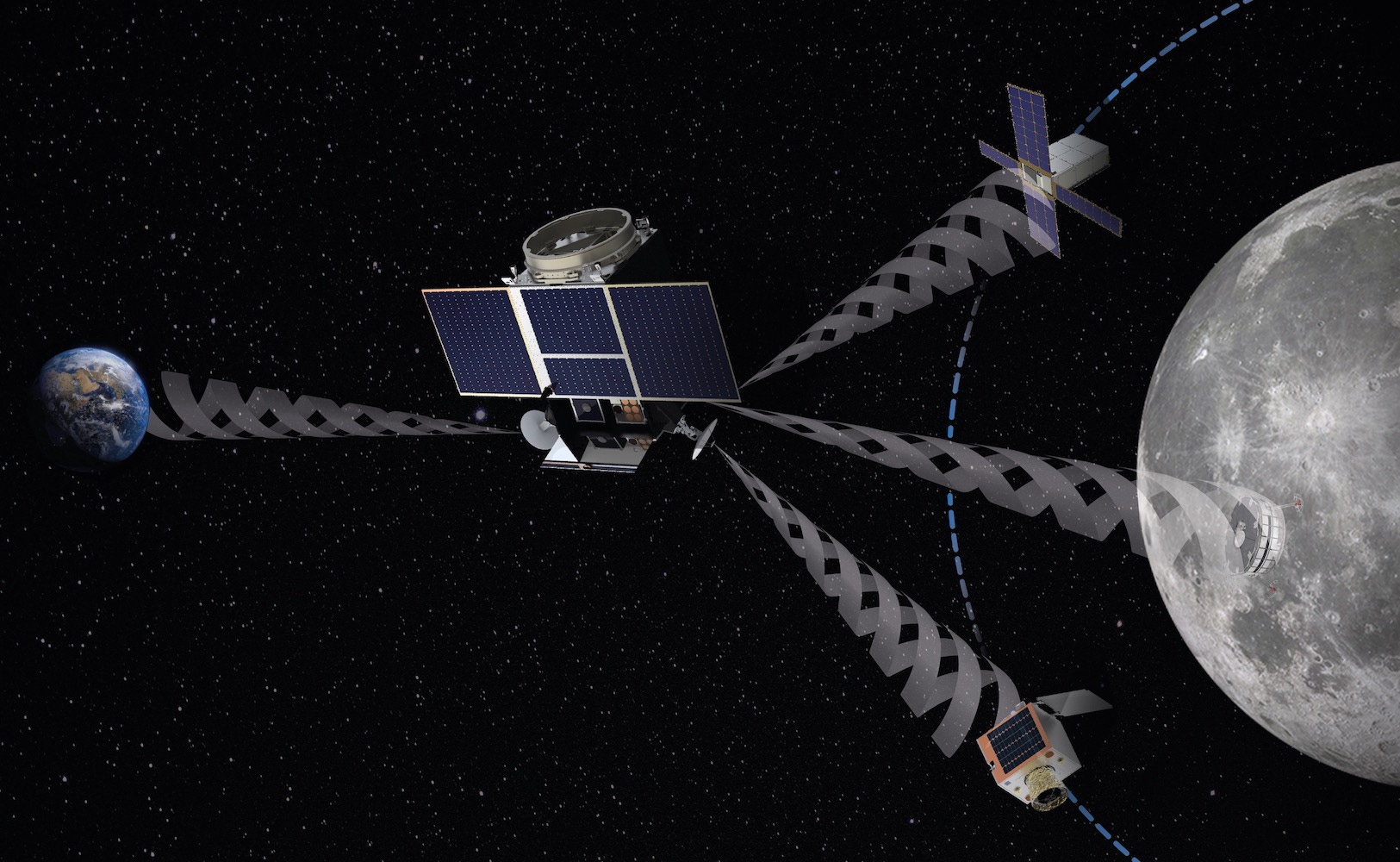
ESA signed a contract with SSTL in September 2021 worth $23.5 million to get communications services from Lunar Pathfinder. NASA also intends to use Lunar Pathfinder as a data relay for their 2025 farside CLPS mission. Lunar Pathfinder represents the first part of ESA’s Moonlight constellation. Further details aren’t available at the moment but ESA intends for three to four more satellites to join Lunar Pathfinder initially, and then progressively expand coverage to the entire Moon’s surface with more satellites and surface beacons.
NASA continues investing in surface solar panels
The Sun always being close to the horizon on the Moon’s rocky poles means something as mundane as a small rock or a gentle slope in the wrong direction can deprive solar panels powering future lunar habitats of sunlight. Extensive studies from ESA and NASA have shown that even the best high-altitude sites would need solar panels placed at least 2 meters above the surface to generate adequate power, and more than 5 meters for significant power. Transporting and deploying several such huge solar panels on the Moon to power future habitats can be challenging, which is why NASA recently awarded Folditure with $750,000 funding to further mature their solar panels, which are foldable, compact and high-efficiency but need adapting for lunar conditions.
Note that last year NASA made similar awards of $700,000 each to five companies to develop vertical solar arrays that auto-deploy up to 10 meters in height, retract for relocation, be stable on steep terrain, be resistant to abrasive lunar dust, all while minimizing mass and volume for easing delivery to the Moon. NASA had then said it would downselect up to two of those five companies this year and provide up to $7.5 million in funding each to mature their designs, build prototypes and perform lunar environmental testing before eventually deploying one such system for the Artemis Moon base. It isn’t clear where Folidture’s funding fits in.
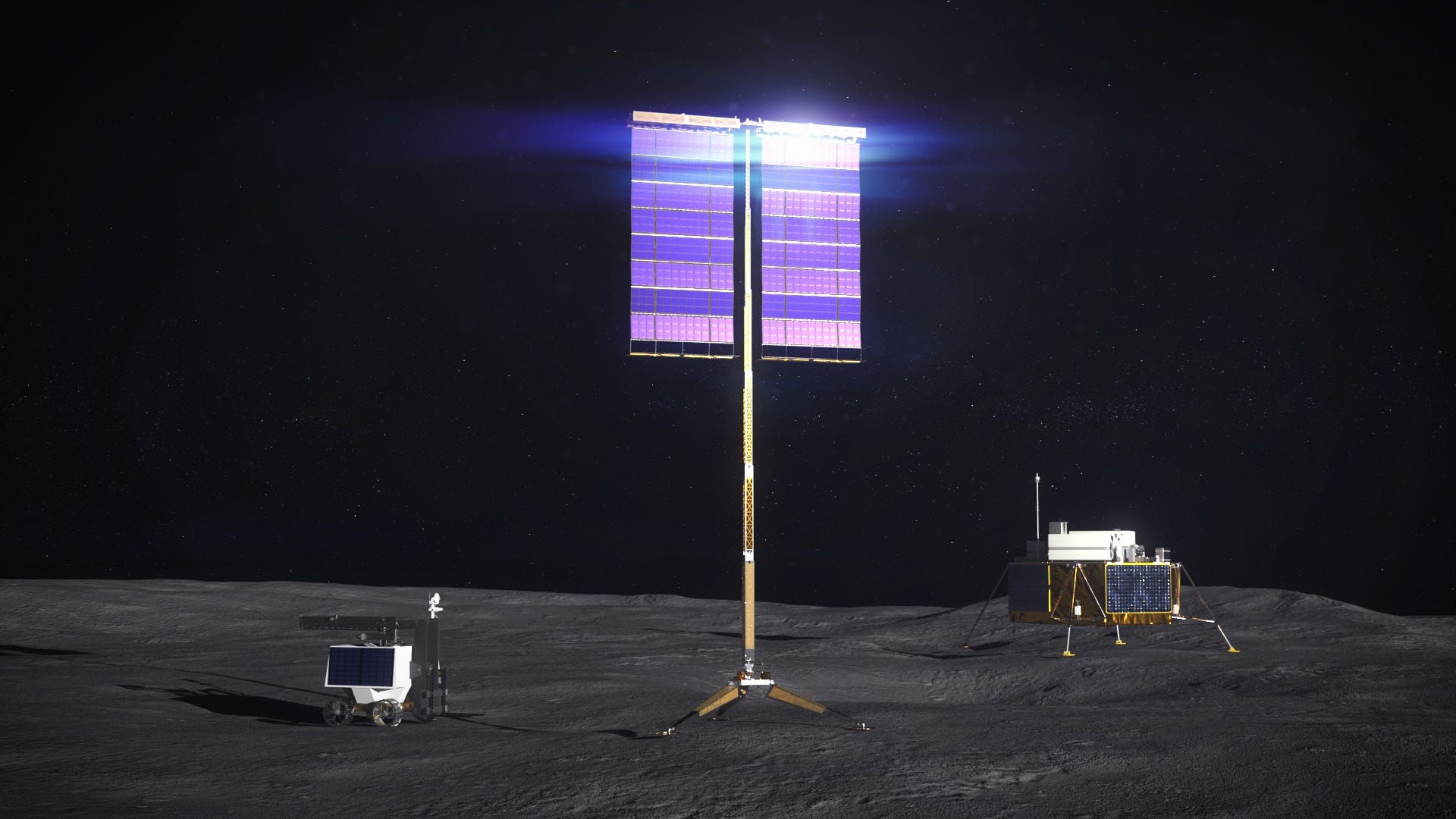
More Moon
- On April 26, NASA’s fully stacked SLS rocket arrived at its assembly building for repairs needed to complete the pending wet dress rehearsal test before the Artemis I Moon mission launch.
- The Lunar Business Review, a monthly newsletter dedicated to the Moon (yay!), notes that a Northern Sky Research report estimates that the lunar industry may generate $105 billion and witness over 250 missions by 2031, roughly in line with PwC’s estimate last year of the lunar market passing $170 billion by 2040. This implies the lunar market could by then make up at least 15% of the entire space industry.
- Japan’s SLIM Moon landing mission to demonstrate pinpoint touchdown (~100-meter accuracy) will launch by end of March 2023 instead of this year.
- Russia’s Luna 26 and Luna 27 mission will be delayed by some (unspecified) time to focus on the country’s (Earth) orbital technologies and needs.
Thank you Epsilon3 and Open Lunar Foundation for sponsoring this week’s Moon Monday.
→ Browse the Blog | About | Donate ♡
